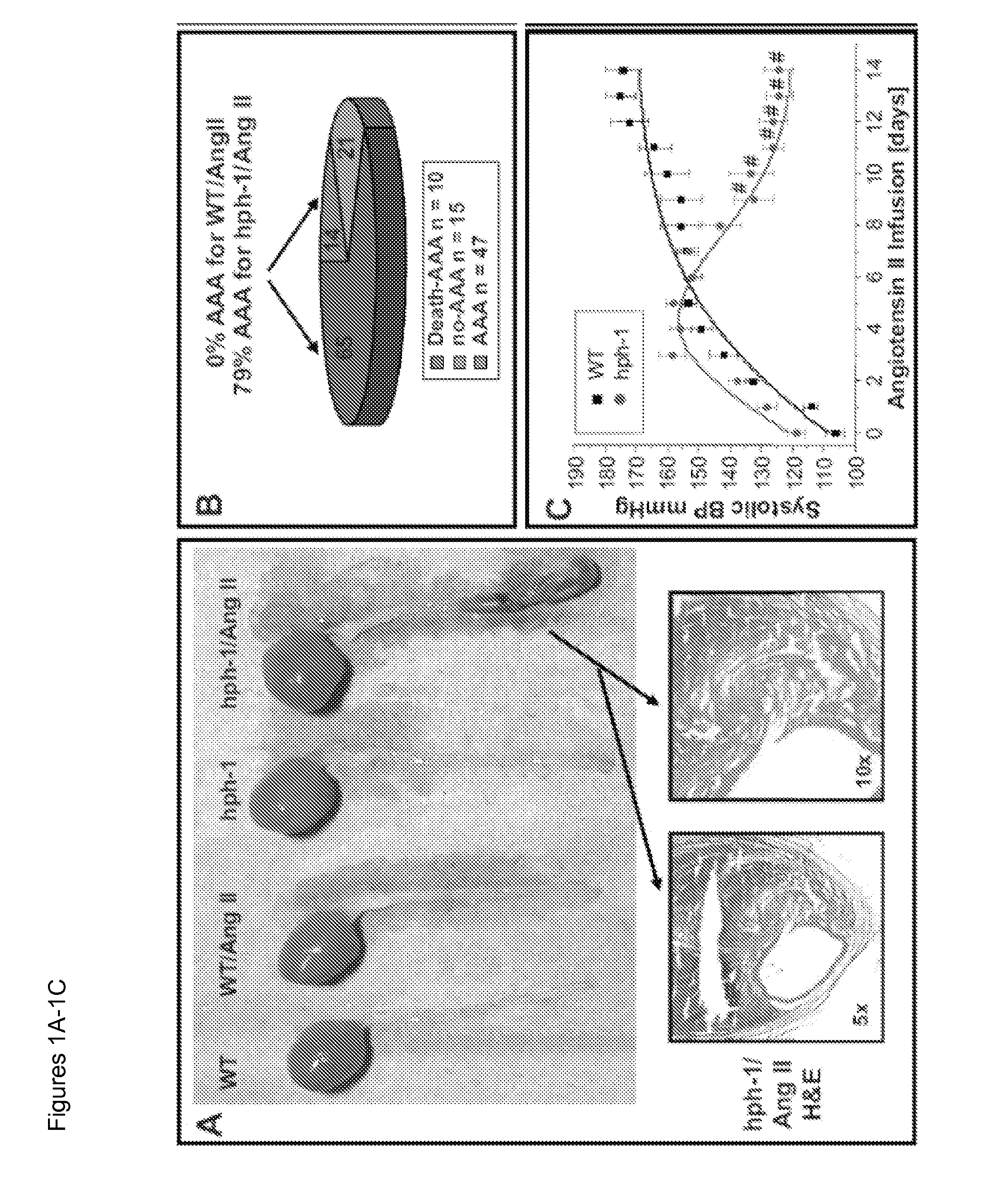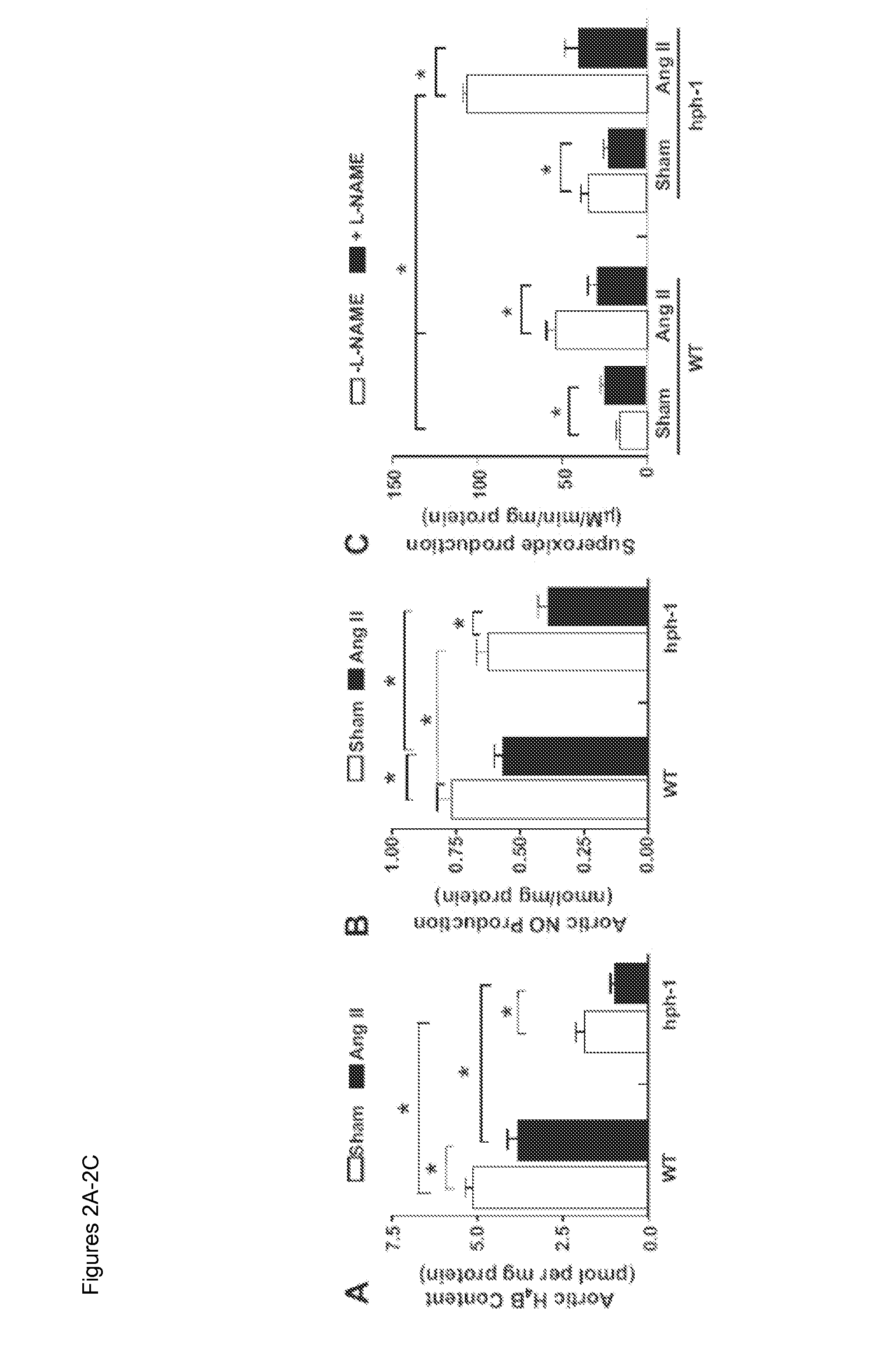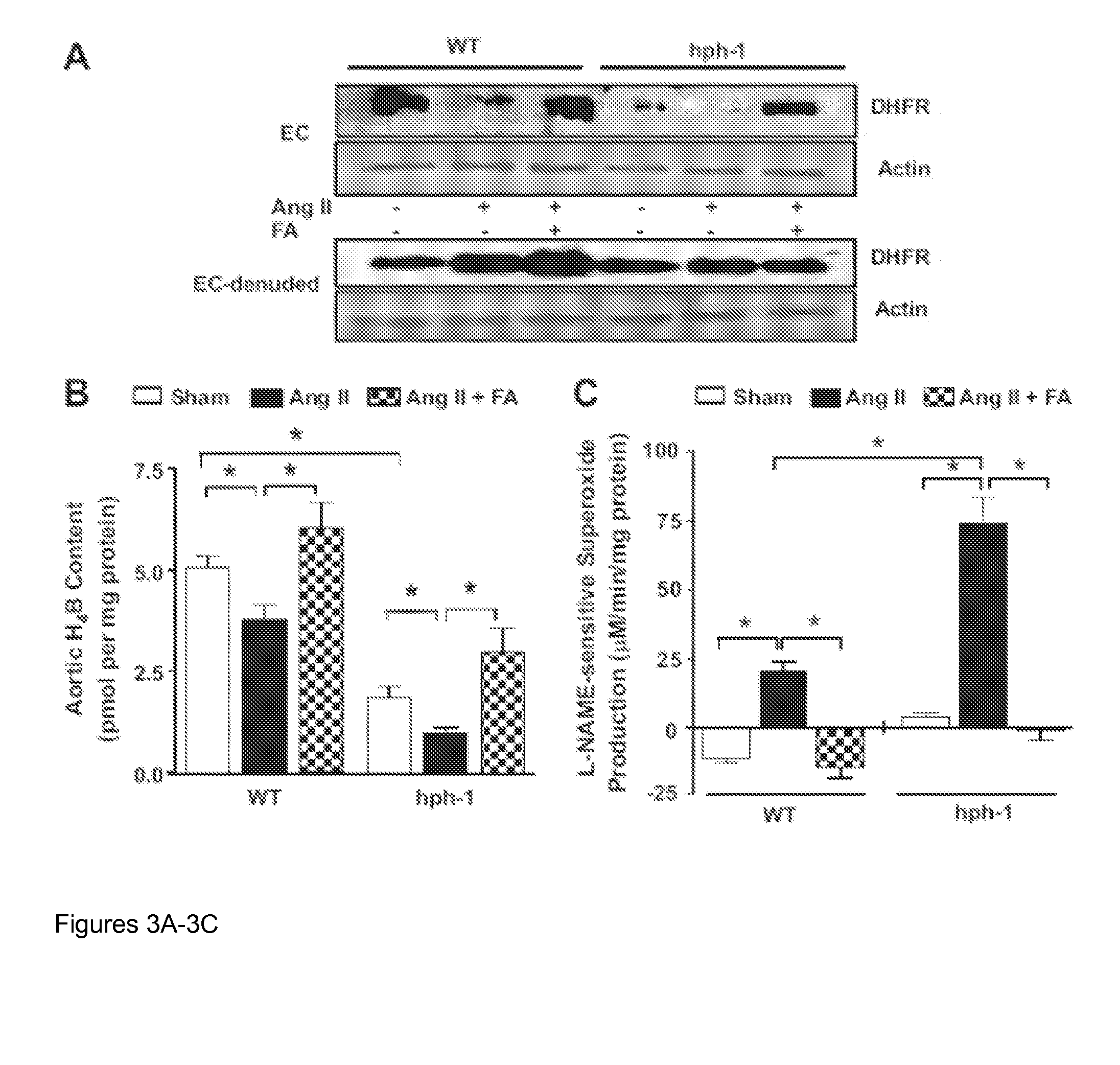Biomarker for abdominal aortic aneurysm
a biomarker and aortic aneurysm technology, applied in biochemistry equipment and processes, instruments, material analysis, etc., can solve the problems of surprising lethal rupture and silent growth, and achieve the effect of effective treatmen
- Summary
- Abstract
- Description
- Claims
- Application Information
AI Technical Summary
Benefits of technology
Problems solved by technology
Method used
Image
Examples
example 1
Role of Uncoupled Endothelial Nitric Oxide Svnthase in AAA Formation
[0050]This example demonstrates a causal role of eNOS uncoupling / tetrahydrobiopterin deficiency in AAA formation. Therefore, oral folic acid administration, endothelium-targeted dihydrofolate reductase gene therapy, and perhaps other countermeasures directed against eNOS uncoupling could be used as new therapeutics for AAA.
[0051]By producing nitric oxide (NO) to rapidly inactivate superoxide (O2−) and other reactive oxygen species (ROS), endothelial NO synthase (eNOS) protects vascular cells from oxidative damage. Accumulating evidence has demonstrated that, when eNOS cofactor tetrahydrobiopterin (H4B) is deficient, eNOS becomes dysfunctional to produce O2− rather than NO.1-13 This uncoupling of eNOS could deteriorate endothelial dysfunction, making it extremely difficult to correct. One important pathological agonist capable of transforming eNOS into the uncoupled state is angiotensin II (Ang II).1,2,5 As previ...
example 2
Prevention of Abdominal Aortic Aneurysm Formation Via Dietary Folic Acid
[0075]This example demonstrates that a FA supplemented diet can prevent the development of AAA in Ang II-infused apoE null mice via improvement of tissue H4B levels and the recoupling of eNOS. The data presented in Example 1 show that FA is effective in abolishing the development of AAA in the Ang II-infused hph-1 animal model. In this Example, the treatment is tested in another AAA model to show that the protective effect of FA extends to other models. Further, this example tests whether FA exerts its protective effect via H4B and the recoupling of eNOS.
[0076]Three to five month old apoE null mice were infused with Ang II (1000 ng / kg / min) for 4 weeks using implanted Alzet osmotic pumps. Animals were fed normal chow or customized FA chew (15 mg / kg / day) two days prior to Ang II infusion and throughout the study period of 4 weeks. Of note, 24 out of 26 Ang II infused apoE null mice (92.3%) on normal chow developed...
example 3
Circulating H4B Levels as a Biomarker for AAA in hph-1 and apoE Null Mice
[0084]This example demonstrates that H4B levels can be used as a biomarker for AAA. In this study, both hph-1 mice and another established AAA model of Ang II infused apoE null mice were studied. In apoE null mice, H4B measured using HPLC showed that in the aortas, H4B levels decreased with Ang II infusion (4.86±0.32 to 2.72±0.26 pmol / mg, n=6 each), and increased with oral administration of FA (6.60±0.62 pmol / mg, n=6). A similar trend was observed when H4B was measured from plasma (3.31±0.13, 1.87±0.11, 5.80±0.30 pmol / mg, vehicle, Ang II, FA, respectively, n=6 each). Identically in hph-1 mice, aortic levels of H4B came out to be at 1.87±0.25, 0.99±0.11, 3.00±0.64, and plasma levels being 1.37±0.05, 0.92±0.06, and 2.36±0.25 pmol / mg (for vehicle, Ang II & AngII / FA respectively, n=3 each). More complete and updated data are presented in FIGS. 9A-B and 11.
[0085]Further, linear correlation between plasma and aortic ...
PUM
 Login to View More
Login to View More Abstract
Description
Claims
Application Information
 Login to View More
Login to View More - R&D
- Intellectual Property
- Life Sciences
- Materials
- Tech Scout
- Unparalleled Data Quality
- Higher Quality Content
- 60% Fewer Hallucinations
Browse by: Latest US Patents, China's latest patents, Technical Efficacy Thesaurus, Application Domain, Technology Topic, Popular Technical Reports.
© 2025 PatSnap. All rights reserved.Legal|Privacy policy|Modern Slavery Act Transparency Statement|Sitemap|About US| Contact US: help@patsnap.com



